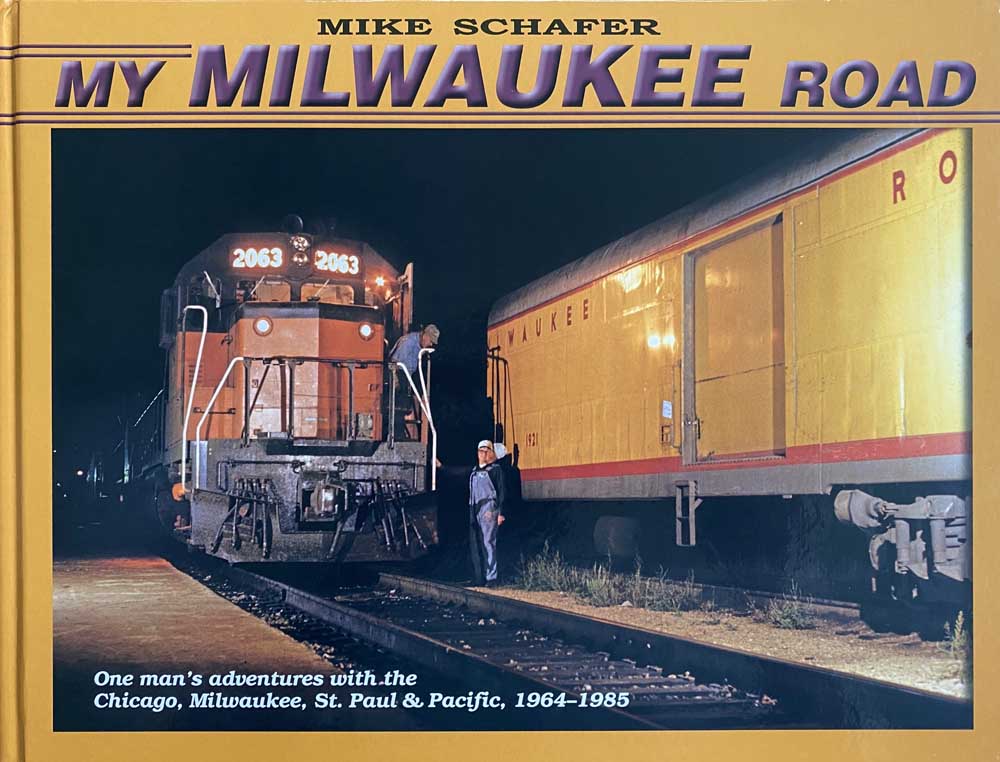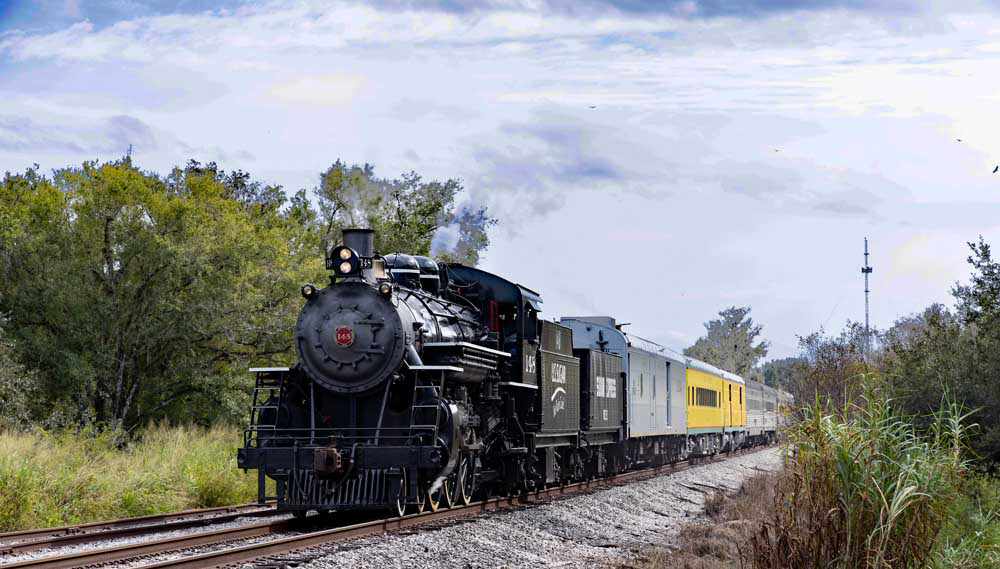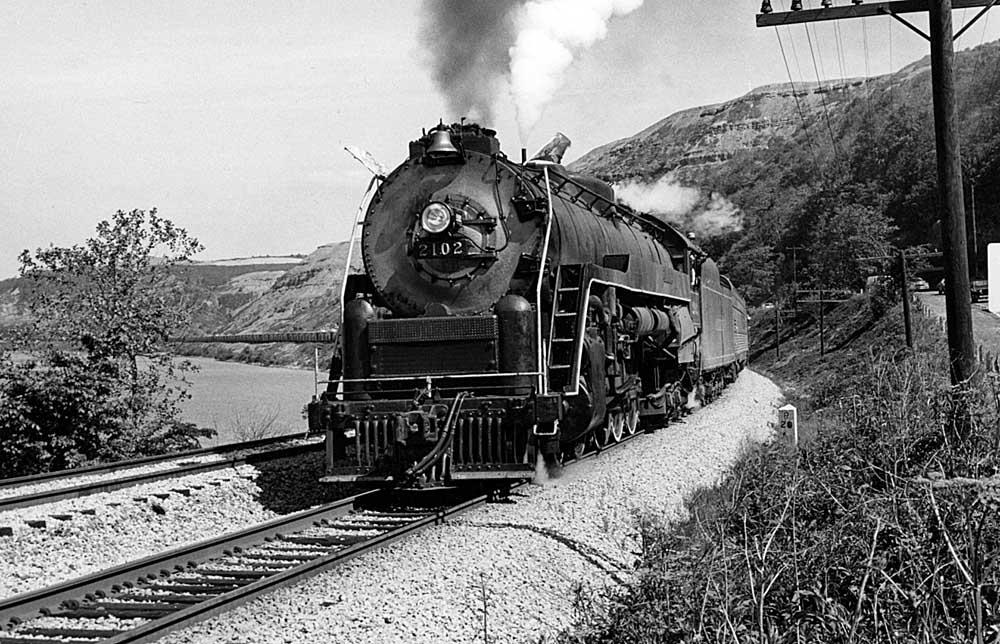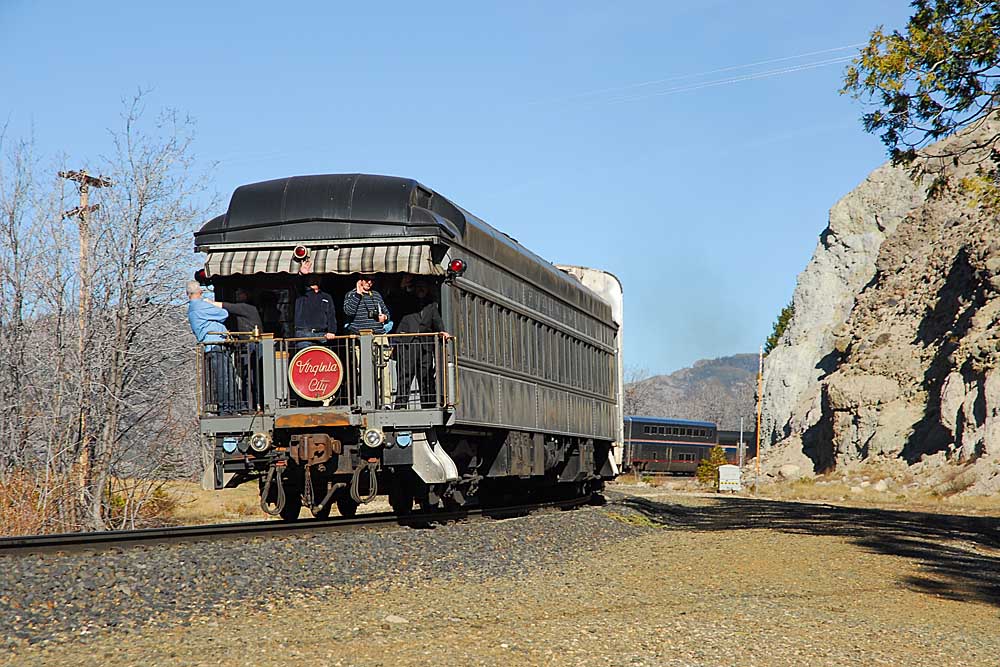Even as he handed it to me the other night at a Milwaukee slide show, I couldn’t quite believe what Mike Schafer was telling me. “Hey, this is my first railroad book! Maybe you’ll write about it?”
Mike Schafer’s first railroad book. That didn’t sound quite right. I’ve been reading Mike’s name on all kinds of publications for more than 40 years, on railroad and model-railroad books and on countless issues of Passenger Train Journal magazine, not to mention articles in Trains and Classic Trains. For as long as I can remember, Schafer’s name has been part of the conversation.
Then Mike cleared up my confusion. The handsome book he was giving me — My Milwaukee Road: One Man’s Adventures with the Chicago, Milwaukee, St. Paul & Pacific, 160 pages of great photography and commentary — is actually the first book Mike has published himself, under his own White River Junction Productions imprint.
I have to give him credit, a venture like this is kind of like jumping into the deep end. You want me to write about it, Schaf? Of course!
As Mike notes in his introduction, there are plenty of Milwaukee Road books on the shelf, covering the railroad in detail, from its fabled Hiawatha passenger trains to its idiosyncratic roster of locomotives to its star-crossed Pacific Extension. Not to mention its long, sad march toward liquidation. The MILW is not lacking for documentation.
But that is not Mike’s concern here, and that’s good news. The author has created an intensely personal tribute to one of his favorite railroads and that makes for a great connection with his audience. Mike’s experiences growing up with the Milwaukee Road in northern Illinois and southeastern Wisconsin are universal in nature, and his skills as a writer make his various adventures seem like your adventures.
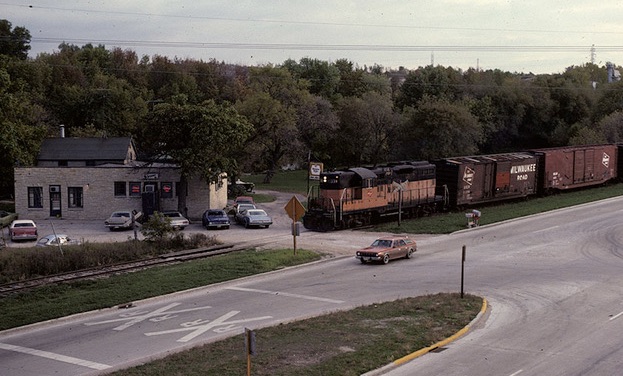
For most readers, the glory of this landscape-format book likely will be the photography. I’ve long considered Schafer to be one of the key photographers of his generation, someone who made a name for himself in the 1960s and ’70s as a master of composition and a classic exponent of Ektachrome and Kodachrome slide film. His early work in Trainsmagazine and Kalmbach Books won him a lot of attention, and the color stuff here bears that out.
The photographs in Mike’s book cover a lot that was iconic about the Milwaukee Road, from its shared (with Union Pacific) City passenger trains on the main line to Savanna, Ill., to its Hiawathas at countless locations between Chicago and the Twin Cities, to quieter moments at yards and on branch lines across “Schafer territory.”
His early work depicting the Milwaukee’s line in and around his hometown of Rockford are good examples. From FM switchers working the CB&Q interchange to an arresting view of an F unit leading a freight train over the downtown Rock River to his first night shot of a local passenger train parked at nearby Beloit, Mike shows that Rockford was a good place for a railfan to grow up.
One chapter is especially rewarding for me: “From Hometown to Hometown,” about his move to the Milwaukee area, where I’ve lived for 42 years. He was fortunate to get here in time to shoot the railroad’s old Everett Street station and its trademark trainshed, just ahead of the wrecking ball. As a railroad town, today’s Milwaukee is a ghost of itself, so Schafer’s views of the Beer Line and the junction known as Grand Avenue and Skytop observation cars along Clybourn Street seem like long lost friends.
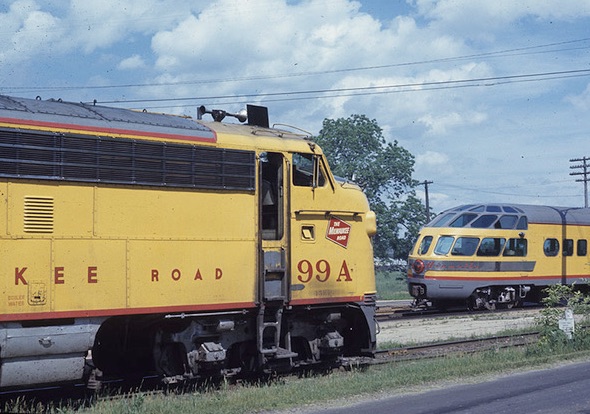
And those Milwaukee diesels: was any roster so eclectic? The book is very effective in charting the transition of Milwaukee motive power from the first generation to the second, and he’s got ’em all here, from FM C-liners (in orange and maroon!) and U-boats to latter-day GP30s and SD40-2s. And everywhere, it seems, E and F units, hauling passenger trains out of Chicago Union Station, rolling the Sioux along weedy track across southern Wisconsin, hustling the “Cannonball” commuter train into Milwaukee.
Mike got one of my favorite shots in the summer of 1966 at the engine terminal at Bensenville, northwest of Chicago, where the shoulder-to-shoulder lineup at the fueling rack included a GP9, a C-Liner, a U25B, and a string of GP40s. Schafer’s has the good sense to run it nearly across an entire horizontal spread, for fullest impact.
As longtime Schafer fans know, his writing skills match those of his photography. Throughout the book, Mike brings the reader chatty, informative descriptions of favorite fantrips, encounters with tower operators, and railfan misadventures with a well-known cast of characters, including Jim Boyd, Dave Ingles, and Jim Scribbins, among other luminaries.
Mike’s description of his first visit to the Milwaukee Road trainshed in Milwaukee is a good example of his eye for detail: “This was the first time I had ever been in one of those classic, train-shed-type station complexes. There were no platforms per se, as everything under the trainshed was paved up to the railheads as though it were a big, wide street full of streetcar tracks. Though unthinkable today, in those days you had baggage wagons moving all over the place while passengers milled about.”
Mike really puts you in that trainshed. Just like he does with the rest of “his” Milwaukee Road as depicted in this refreshingly personal book. Highly recommended.
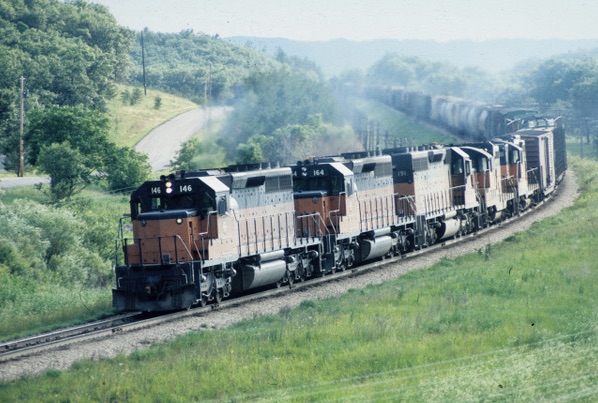
For information on ordering Mike’s book, priced at $69.95, please visit his new website: schaferstation.net.





